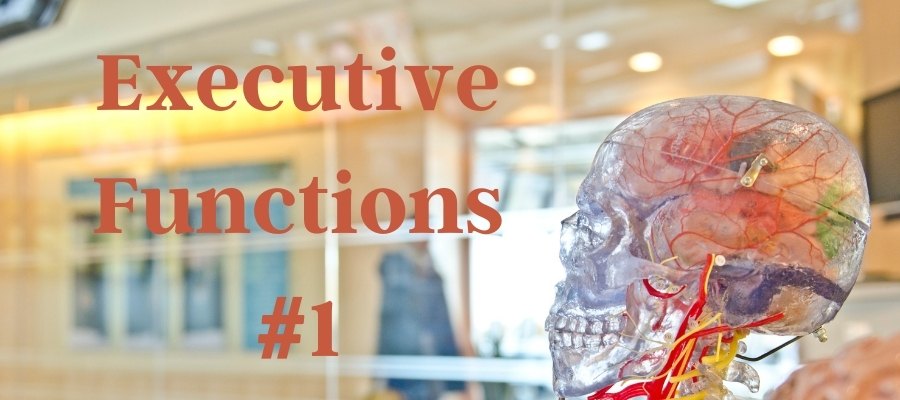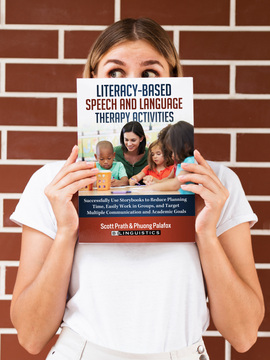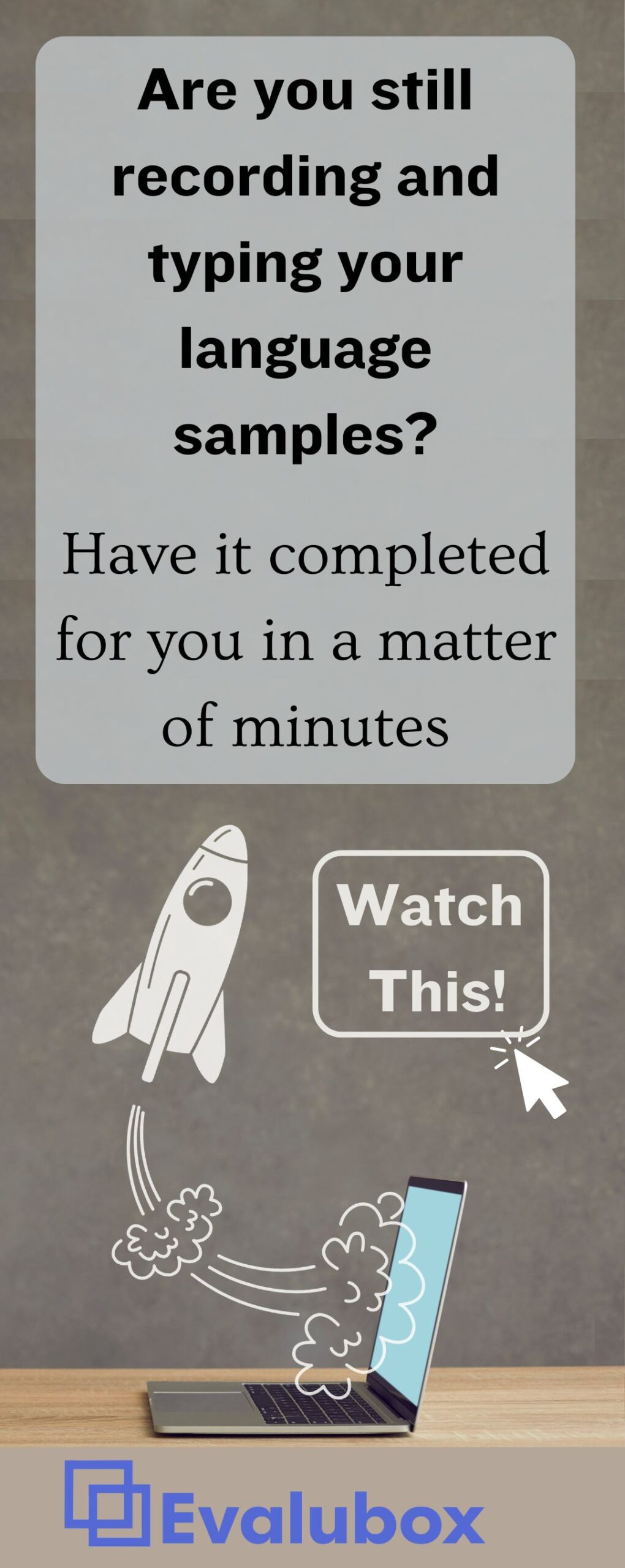This is Part 1 of a 5-Part Series on Executive Function. Links at the bottom.
More and more these days we are hearing about Executive Functions in speech therapy, in the literature, in our schools, and in the news related to autism, head injury, and post traumatic stress disorder. If you are like me, maybe you touched upon it in grad school. Even in this case, it was not always clear to see what to do in speech therapy to help clients who struggle with attention, organization, and behavior.
Secondly, this is a hot topic for the general education folks and they are addressing these difficulties head on. Our job as special education people is to support the general education people. How do we do it in this case?
Thirdly, (and this is heartbreaking for me as I am a veteran), soldiers suffering from post-traumatic stress are healing but are struggling to cross the last distance where they can organize themselves professionally, keep their relationships together, and initiate on all the actions needed to restart their life back here in the states. These are all frontal lobe activities and I know executive function skills are at the heart of matter. The great news is that writing executive function speech therapy goals for adults is just as easy and effective as writing executive function goals for children.
What do we do?
We do what we always do. We learn. We see how our unique communication skillset can improve lives. We become strong team members. We intervene. And, in the third case above, we save lives.
For some of us, this is a new topic. Others may have a lot of experience in this area but benefit from seeing what the more recent literature says. So, this is a five-part essay where we will:
1) Start here with a quick and interesting discussion about why our students with executive functioning disorders struggle with attention, organization, and behavior.
We will also identify the 8 areas to target to write amazing executive function speech therapy goals. Then, in the next essay we will:
2) Introduce a simple framework for identifying which executive functioning skills your student might be struggling with
We move on to :
3) Match Executive Function Strategies to Areas of Need
In part four we get a little brainy and talk about:
4. How executive functions develop across time and what is going on in the brain.
And lastly we cover:
5. How executive function relates to or mimics learning disabilities and second-language acquisition.
Are you ready to be an advocate for the underdogs?
If I could sum up what knowledge on executive function can give each professional I would say “empowerment.” A tragic aspect of children with executive functioning difficulties is that they are frequently seen as being defiant, can’t remember what was just taught, have difficulty problem solving and planning, have trouble organizing materials, and do not adhere to a schedule. But the truth is, they are typically trying extremely hard and no matter how hard they try, they fall short. Or, they truly believe that the work they are producing is what the teacher wants and are surprised when they do not do well.
You Matter
With knowledge on executive function you can be the voice of reason showing that the child is struggling with a deficit and not making a poor behavioral choice.
What Does Difficulty with Executive Functions Look Like?
Professionals often refer to executive functions as if it were a single disorder. In fact, there are many different features to the disorder and a student may demonstrate some strengths and some weaknesses. Here is a list gathered from several sources of areas of difficulty for those who struggle with EF.
- inhibition of impulses, stopping to choose an appropriate response
- previewing likely consequences of action (both short- and long-term)
- holding and manipulating information in working memory
- sustaining attention despite distraction or fatigue
- planning, both short- and long-term
- task initiation – getting started on a chosen task
- depth of processing, choosing a level that is not too superficial or too consuming
- tempo control, maintaining an appropriate speed and rhythm for work
- development of automaticity, making a skill routine so it takes no conscious effort
- satisfaction, perceiving and deriving pleasure from reinforcers
- organization, both internal (thoughts) and external (materials)
- time management – predicting how long things will take, planning, and acting
- flexibility – adapting strategies or plans in response to mistakes or new information
- self-monitoring – observing one’s own performance and comparing it to standards
- emotional self-regulation – being aware of and managing feelings
- metacognition – being aware of one’s own thought processes
What is Our Role with Executive Functions as a Speech Language Pathologists?
Our job is to sift through these concerns and figure out which aspect of executive functions is being affected cognitively. Once we have a clear picture of our clients’ deficits, we can move on to identifying intervention strategies to use and share with colleagues.
Different authors have proposed varying lists of executive skills. These eight have been taken from the widely used BRIEF (Behavioral Rating Inventory of Executive Function).
The Core Executive Function Goal Areas as Described as “Skills”
For those of you that are out there researching executive function and communication you know that it’s difficult to find. It is easier to search for executive function “skills” and then use our professional brains to translate this into “deficit” so that we can write great communication goals. Here are the eight core areas:
Planning and Organization
The ability of a student to maintain order in their personal space and take care of their personal belongings and school work. It also involves mentally organizing and grouping information.
Working Memory
A dynamic process that involves reviewing new information and retrieving, holding, and manipulating stored information in our minds for the purpose of completing a cognitive task.
Initiation
The ability to begin a task or activity and to independently generate ideas, responses, or problem-solving strategies.
Task Monitoring
The ability to monitor one’s own performance and to measure it against a standard of what is needed for any given task.
Self-Monitoring
The ability to observe one’s own behavior and to determine whether it conforms to explicit behavioral expectations and unwritten social rules.
Inhibition
The ability to “put on the brakes’ or to stop behaviors at the appropriate time.
Emotional Control
The ability to reflect on one’s own feelings and then to use the understanding to guide one’s emotional responses.
Shifting
The ability to “change gears.” Moving freely from one situation to another and thinking flexibly in order to respond appropriately to a new or unexpected situation.
What is the most important role that executive function skills play in learning?
Executive Functions cue the use of learned strategies. Let’s say this together because it is the key to our role as special educators and the key to getting a child to move ahead.
Executive Functions cue the use of learned strategies
Executive Functions are not an academic topic.
Executive Functions are not the strategies.
They enable a child to remember and use strategies and access academic knowledge. General education teaches stuff. Special Education creates the structure that the learned stuff can stick on, be organized on, and be accessed.
Take a moment to digest this. If you are trying to target executive function in speech therapy you have to write goals that build strategies that lead to the outcome above.
Executive Function Speech Therapy Goal Example
Let’s say that you have a child that fixates on something, won’t transition to a new task, gets made when she has to give up the iPad, you get the picture.
What you are describing is a child who lacks inhibition in certain circumstances. Poor goals would say: Child stops/ends/gives back-whatever-in 5 minutes/after 3 requests. Do you see how this is negatively framed?
Better goals would highlight the strategy. During time of transition child:
- acknowledges transition verbally
- asks for more time
- sets timer for self
- verbalizes desire to continue with task
- acknowledges verbally what is next and consequences for not proceeding
The strategy puts the responsibility back on her. The goal is getting the child to initiate the strategy.
Now that we know what we are looking for, on to parts 2:
A simple framework for identifying which executive functioning skills your student might be struggling with
And, if you want to learn more:
Executive Function 101: Speech Therapy, Evaluations, and Classroom Support – CEU Course
Access and develop a student’s cognitive abilities to improve their attention, behavior, and organization. We began by identifying why students with executive functioning disorders struggle with attention, organization, and behavior. Then, we related these difficulties to classroom performance and home behaviors … Continue reading
5 Part Executive Function Series
Part 1: Executive Function in Speech Therapy – What is Our Role as SLPs?
Part 2: Building Student Executive Functioning Skills
Part 3: 9 Ways Executive Function Affects Learning
Part 4: Executive Functions of the Brain – Understand This and Understand Your Students
And a Bonus!: Helping When Children with Executive Function Difficulties Have Additional Diagnoses
References
BRIEF (Behavioral Rating Inventory of Executive Function) Gioia, G. A. & Isquith, P.K., 2013
Cooper-Kahn, Joyce, and Margaret Foster. Boosting Executive Skills in the Classroom: A Practical Guide for Educators. San Francisco: Jossey-Bass, 2013. Print.
Gioia, G.A., Isquith, P.K., Retzlaff, P.D., and Espy, K.A. “Confirmatory Factor Analysis of the Behavior Rating Inventory of Executive Function (BRIEF) in a Clinical Sample.” Clinical Neuropsychology, 2002, 8(4), 249-257.
Moraine, Paula. Helping Students Take Control of Everyday Executive Functions. London: Jessica Kingsley, 2012. Print.
Logsdon, Ann. “Executive Functioning Understanding Executive Functioning Disorders.” Http://learningdisabilities.about.com/. Www.about.com, n.d. Web. 23 Feb. 2015.
McCloskey, George, and Lisa Perkins. Essentials of Executive Functions Assessment. Hoboken, NJ: Wiley, 2013. Print.






Thank you for this article! I LOVED your brief summary of what Gen Ed does and what Special Ed does: “General education teaches stuff. Special Education creates the structure that the learned stuff can stick on, be organized on, and be accessed.” I am already thinking about how I can turn this content into a brief training for my teachers. I will be sharing this with my team!
Super cool!
I love EF and don’t think it has been translated properly for SLPs to help teachers. Very powerful info. Glad you found it useful. I am writing for the ASHA Leader blog on this topic next month and want to put together more information on it. Hope you enjoy this series.
This was very informative. When will Part 2 and Part 3 be shared????
Hi Jane,
So much interest on this topic. Really exciting. We have done a lot of work behind the scenes with Executive Functions but are just now publishing it out to the blog and our site. I also wrote on the topic for the ASHA leader blog and that will be out next month. Part 2 publishes on Thursday 2/7. Part 3/3 will be out on Thursday 2/28. Be on the lookout. Scott